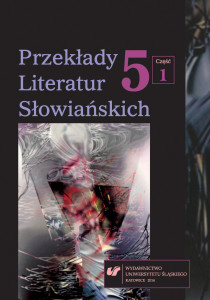Mutual relationships between translation and comparative studies
Volume 5, Part 1, is devoted to the overlapping of areas of translation, comparative studies, and their mutual relationships. Comparative studies and translation have become keywords for contemporary culture, where transversality is the dominant mechanism. Comparative studies thus constitutes the area for translation studies, as demonstrated by most of the authors whose contributions have been collected in this volume, which is entitled Mutual Relations Between Translation and Comparative Studies. In this context, contributors undertake such topics as the place of translation and translation studies in research (Marko Juvan, Bożena Tokarz), the methods of translation research (Martina Ožbot), intertextuality (Hanna Makurat), the hermeneutic attitude of the researcher and the translator (Bożena Tokarz, Robert Grošelj, Anita Srebnik, Anna Muszyńska); scientific translation studies (Tea Rogić Musa), the role of the comparative translator in concrete translations (Anna Muszyńska, Marta Buczek, Małgorzata Filipek, Monika Gawlak), translation on the borderline between cultures (Miran Košuta), translation vis-à-vis world literature (Marko Juvan), the cultural and linguistic translation triangle (Robert Grošelj), the refractivity of translation (Dorota Żygadło), dilemmas in comparative studies and translation (Leszek Małczak), translation as a genre of native literature (Magdalena Pytlak), and the problem of the phenomenon of hybrid texts, an explicit case of the removal of the original from the field of vision for pragmatic reasons (Przemysław Brom). All of the articles are devoted to the subject of the translation of literary texts except three. In two of those, the authors are concerned with non-literary texts: a bilingual dictionary (Anita Srebnik) and administrative texts of the European Union (Przemysław Brom). One article is devoted to translation practice, which shows that – regardless of the criticism of binarism and its questioning of the idea of equivalence – the translator looks for equivalence following moral and cognitive imperatives, fully aware of their gradability (Hanna Karpińska). Target readers of this publication are scholars of Slavic literatures and cultures (including Polish), students, and whoever might be interested in broadening their knowledge of Slavic cultures.
See entire issue:









